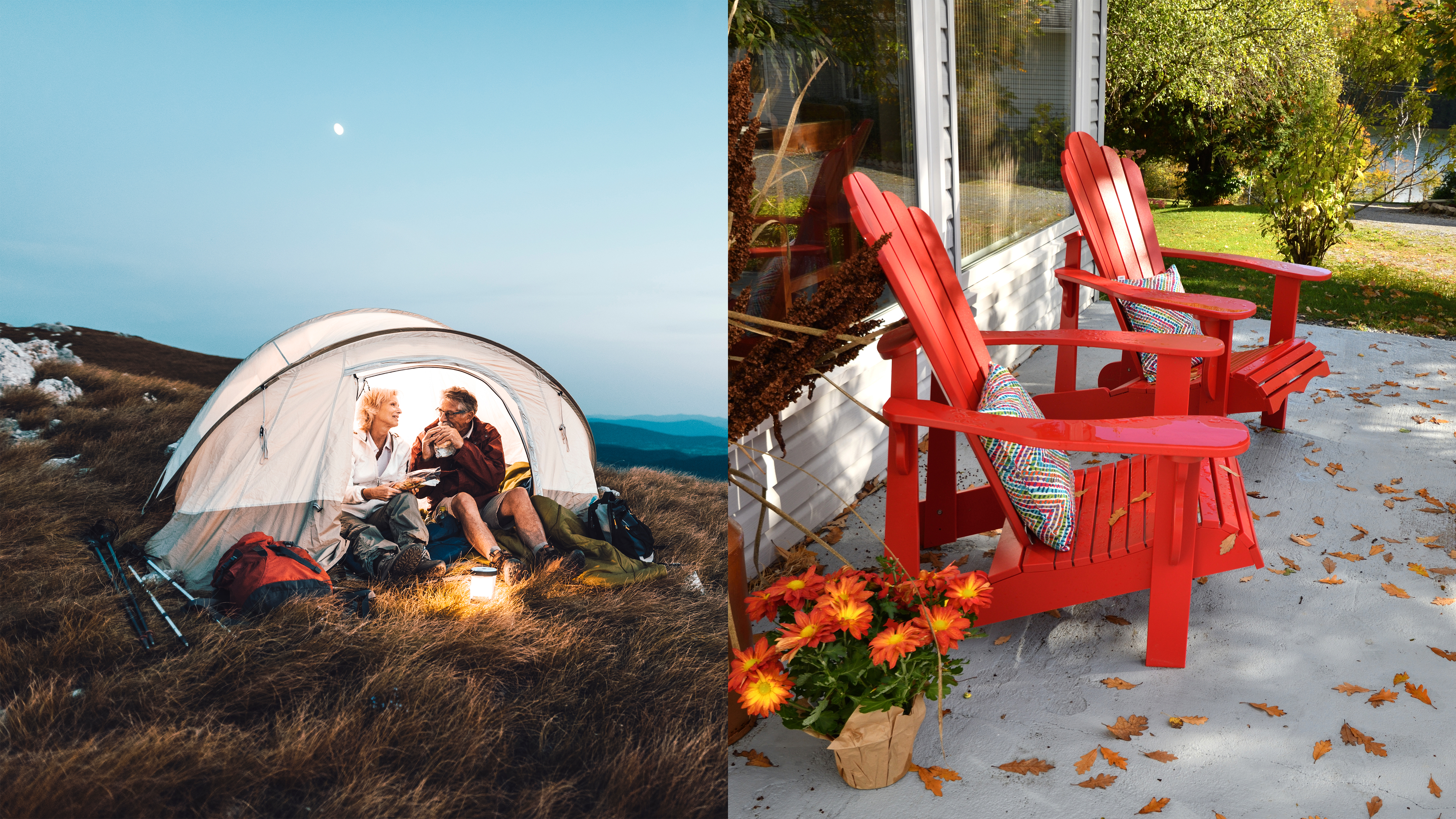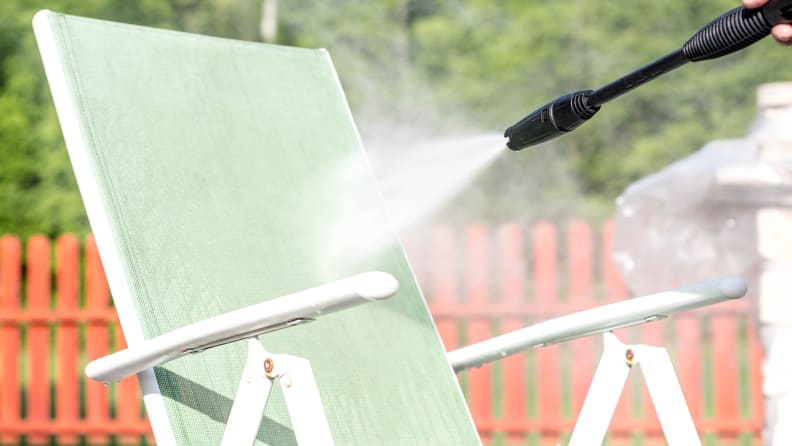 — By clicking one of our links you're supporting our labs and our independence, as we may earn a small share of revenue. Recommendations are separate from any business incentives.
— By clicking one of our links you're supporting our labs and our independence, as we may earn a small share of revenue. Recommendations are separate from any business incentives.Winter is just around the corner in most areas of the country, so its (sadly) time to put away all the stuff you enjoy outdoorsfrom your backyard furniture to your camping, hiking, and sports gearfor a few months of hibernation. But you shouldn't just cover everything with trash bags to stick in the basement. If your stuff is stashed with trapped moisture, you may be faced with an unwelcome, moldy surprise come springtime. These expert-backed tips will keep all your outdoor equipment dry and clean during the cold months so they're ready to go at the first glimpse of spring.
1. Prep hard gear by giving it a wipe-down
Spend a few minutes cleaning your hard gear, like outdoor furniture, athletic equipment (such as tennis rackets or golf clubs), tent poles, and hiking poles. Removing oils from hands or skin and any mud or trail materials can keep your gear safe from material breakdown while it sits in storage during the winter months. You should also take batteries out of gear like lanterns or headlamps, as those can corrode.
2. Wash clothes and soft gear, too
You wouldn't put regular clothes away dirty and the same goes for outdoorsy gear, which, let's face it, probably gets a lot dirtier. Drop everything water-washable, from base layers to rain layers, into the washing machine, and send down-filled gear (such as sleeping bags) to the dry cleaner. "Washing the garment helps clear out oils from the skin; think like cleaning pores of your skin," says Laura Evenson, an REI employee and experienced thru-hiker based in Conshohocken, Pennsylvania. Pro tip: Follow the washing and drying instructions on the garment's tag to make sure you dont do damage by laundering the item with high heat, or applying a soap that could cause material breakdown.
You can also take this opportunity to re-waterproof any of your waterproof garments, with a product like Nikwax, which does a great job fortifying jackets against the elements.
3. Make sure everything is 100% dry before storing

Rinsing off or wiping down your patio furniture is a great ideajust make sure to let it dry all the way.
This is incredibly important: If youre planning to store a piece of gear in a closed space for many months, you want to make sure its completely dry, or you risk mold and mildew come spring. Mold and mildew can ruin an item or severely shorten its life, even if its a seemingly strong item like a tent pole.
If your patio umbrella or camping gear was recently used in the rain, allow those items to bake in the sun to fully dry before bringing them inside. This goes for backyard furniture or accessories that you use in the summer, too, like lounge cushions. "Try to get in the habit of unpacking and spreading out your gear [for a drying session] before long-term storage," Evenson recommends. "It may not be ideal to have your tent take over your [home], but the day of inconvenience is well worth maintaining the life of your gear."
Check inside plastic bins that contain outdoor supplies, like dishware or tablecloths, to make sure theres no moisture trapped in there. And after you wipe down any hard gear, make sure to wipe it dry it, too.
4. Avoid storing gear in unheated spaces (if you can)
An ideal storage area for anything you store is temperature-controlled with consistent conditions so theres not a large fluctuation to either extreme, but that's especially important for fabric gear, Evenson says. Heat and humidity are not good for items like tents as they can cause the materials and waterproof coating to degrade prematurely.
The absolute worst place is a shed outdoors that will heat up and cool down over and over, pulling moisture into your gear and then freezing it. Instead, opt to hang sleeping bags and tents up in a garage or indoor storage closet. If you must, hard gear made with plastic, metal, or aluminum can live in an area without temperature regulation while you protect your more fragile gearlike backpacks, tents, sleeping bags, and jacketsindoors.
5. When possible, give your gear space to breathe
It might seem like a good idea to store your gear in the storage bag that comes with it, like a sleeping bags small stuff sack or a tents compression bag. But thats not actually a good plan, as you want itemsespecially those made with down and nylonto get consistent air flow while theyre in storage.
Items like tents and sleeping bags are especially important to store in large, breathable bags where they are not compressed, Evenson says. For tents, storing them in their small stuff sacks can cause the waterproof coating to deteriorate more quickly over time For sleeping pads (self-inflating in particular), storing them in their little stuff sacs can affect their ability to self-inflate because the foam inside them becomes compressed.
The best option for most soft pieces of gear is to stash them in a mesh bag, or to find an extra pillow case that can hold a non-compressed sleeping bag inside. Avoid plastic bins when possible, as they dont allow for air flow, and instead opt for hanging your gear on low-cost hooks or hangers in a closet.
The product experts at Reviewed have all your shopping needs covered. Follow Reviewed on Facebook, Twitter, and Instagram for the latest deals, product reviews, and more.
